MIKE FOLEY
|
Mike Foley is one of those exemplary people who not only lead full, professional lives, but continue after retirement to produce original and wondrous works. For two decades, before retiring last year at age 63, Foley’s imagination ran to the artistic, the fanciful, the abstract; and five years before retirement as a mechanical engineer he began acting on those thoughts. He started to sculpt what he saw in his mind’s eye.
Using locally gathered glacial stones as well as those from neighboring states and beyond, he works in various types of granite, beach stone, fieldstone, basalt, alabaster, and soapstone, which offer a wide spectrum of hues and grains. Foley’s hand-carved sculptures range from those that fit in the hand to large art pieces for the garden or living room.
He carves functional mortar and pestles, rolling pins, and soap dishes. “They’re so difficult it’s almost like having a job,” says Foley of the dishes. He chisels exotic looking Easter Island figureheads, marble sailboats, fish, seashells, and abstracts. Foley’s gray granite sloops with delicate one-eighth-inch thick sails are awarded to race winners by a local yacht club.
“The Easter Island figureheads cost $15, and I’ve sold pieces costing over $2,000.” Is it a labor of love or a living? “Definitely both. I’m living the dream,” says Foley. “For decades I have been thinking about this and wanting to get into stone carving.”
His larger pieces include Piscine Curvature Study depicting the fluid movement of a fish resting momentarily on a stone base. It is composed of granite with gray and black flecks throughout. Serene and lovely, it has been on display at The Art Nook on Bearskin Neck in Rockport where many of Foley’s pieces have been sold. His sculptures are also in other Cape Ann businesses as well as in his home gallery.
A favorite of Foley’s is his humpback whale composed of black African granite. Its tail is raised with the striated flukes drooping delicately to one side like a curtain.
For aficionados of the sculpting process, Foley’s Facebook page details the stages of its creation from initial roughing of the granite block to shaping each side to carving in the finer details. “After polishing, this piece will be jet black with tiny crystal reflections,” he explains. “The dream” that Foley is living in retirement keeps him busy more hours than he wishes to count. He takes a break though. His “true hobby” now is composing folk tunes, singing, and playing the guitar. msfoleystoneworks.com
PAM STRATTON
|
Pam Stratton took a dose of her own medicine, so to speak, when she decided to channel her mind and body into something completely new. Certified in acupuncture and Chinese herbal medicine, Stratton had been healing people on Cape Ann since 1994.
“Working with people every day exposes me to the ephemeral nature of life,” she says. “I’m aware of the importance of maintaining balance, and I find it in the enduring quality of mosaic. It has that longevity to it. It’s a deeply focusing activity like meditation.”
Eight years ago, Stratton took up the hobby of creating mosaic art pieces. Many include clusters of stone and glass and are of varying shapes with gradations of colors melding into one another. She often uses brightly colored smalti (glass) from Italy and Mexico. Her Inner Canyon is such a piece. Composed of marble, Italian and Mexican smalti tiles, aragonite, and iron pyrite, it is striking, with colors ranging from bright reds to dark browns. It could depict a canyon, as it is titled, but for some it evokes the image of a woman’s body in profile, perhaps dancing the Flamenco.
Among her mosaics Stratton has 6 ? x 6 ? smalti sunflowers; transparent smalti and marble tables; a musician’s lanky silhouette wailing on a clarinet with a brick wall as a backdrop; a gorgeous pink and white mosaic of delicate, raised flowers on similarly colored marble and granite tiles, and many more.
Stratton, president of Cape Ann Artisans, often employs a mosaic lime technique she learned while studying in Italy. She concocts the mixture and then surrounds the central mosaic theme with it. It is something not many artists are doing yet in this country.
Her own “pond mosaic” is a showpiece in her front yard next to her garden. During the annual Cape Ann Artisan Tours, it’s not unusual to have 150 people stopping by to see it. She has depicted the making of the mosaic on her website. There are im- ages of her and occasionally an assistant measuring the space, pouring cement, sketching in the design, laying in slate slabs, and filling in the space with varying sized pebbles and jagged stones. The final result is an eye-popping work of art.
Her prices vary with smaller pieces under $100 and larger pieces, such as a 14 ? x 15 ? square table priced at $400. Some commissions cost several thousand dollars. pamstrattonmosaics.com
RUTH WORRALL
|
For potter Ruth Worrall, life has been a discovery. Unafraid to change directions, her first major exploration was moving from her native Ecuador to the United States at age 16. Her career path has likewise been a journey, forever seeking that which touches her most profoundly.
Worrall got a taste of making pottery in her twenties but then the yearning lay dormant for 15 years. She returned to it when she embarked on a quest to earn a college degree.
“I took a pottery class and discovered the magic of pliable, durable, malleable, delicate clay,” she says. Attracted by its potential, Worrall continued to work in ceramics while completing her bachelor’s degree in photography. A member of Rocky Neck Galleries and the Cape Ann Artisans, Worrall has exhibited and sold her painted and glazed bowls, vases, plates, mugs, and carvings in many North Shore shops.
Admirers tell her they appreciate the elegant simplicity of her beautifully shaped earthy pieces.
“I’m still working on my form,” she admits. “I like round things and I have always liked to make usable things.”
But now she is finding that “usable” doesn’t only mean practical. “Usable for the soul,” is how Worrall describes the evolution of her work. So she is expanding her creativity, freeing herself up to the point where she’s exploring abstract ideas. “If my art makes someone happy, that’s incredibly important. It’s a way of getting someone out of [negative] feelings by looking at a piece of work. Some pieces just make you feel good. I’m start- ing to look at my art that way.”
The artist mixes her own glazes, continually experimenting with a variety of colors: greens, blues, grays, and blacks. Having tested more than 60 glazes, she is in awe of a potter she met who said he has tested 10,000.
“I’m still testing new ones. If they don’t do what I want, I move on to a different one,” she says. She uses an electric kiln, which “gives a beautiful finish to the pot.”
When firing, Worrall will sometimes use a saggar—an enclosed ceramic container. Inside, she will place leaves, seaweed, and other vegetable matter. When removed from the kiln, the pottery will be imbued with brilliant touches of color. Worrall is among a number of exceptional Cape Ann artisans who create useable art for the home as well as the soul. She works at her Gloucester home studio and sells her work from various shops on the North Shore. rockyneckartcolony.org
SARA WRIGHT
|
Stone sculptures, mosaics, jewelry, and fine art may fill our souls, but when the temperature drops, it is Sara Wright’s hand knit and hand woven fabrics that most of us would prefer to wrap around our bodies.
Michigan-bred Wright first visited Rockport after her junior year in college. She kept returning until finally deciding to make it her home. At least part of that decision was the large loom she chose to buy, which took up an entire room in her home. As she moved from one location to another in her twenties, the loom always went with her—in apartments, homes, and studios.
However, when she became a mother in 1990, it was her son—and not the loom— that needed the extra bedroom. Wright’s loom, and her weaving, were set aside. Meanwhile, Wright’s hands did not rest. She knit hats, scarves, and sweaters. Now, with her son grown, she is in full tilt once again, weaving and knitting using wool, mohair, alpaca, cotton, silk, and bamboo (rayon), which is soft, flexible, and drapes well.
Her company, Fiber Wrights, features Wright’s wardrobe accessories as well as throws, bedspreads, and blankets. Her handmade winter scarves and hats are woven using novel multicolored yarns. They exude warmth in beautiful shades of blue, magenta, and a variety of whites, pinks, and reds—actually, every color of the rainbow.
“The yarns I choose, often have to do with the seasons,” said Wright. “But sometimes it has to do with my emotions at the time. I love purples, blues, aqua, and turquoise. But I also love deep creams, red, and avocado.”
Wright’s kimono-style sweater-jackets are woven entirely of pastel-colored fabrics and are ideal for that time between fall and winter.
“I make traditional kinds of knitted sweaters. The stitches are vertical rather than horizontal. People look better in vertical stripes. I do a lot of them,” says Wright, a member of the Cape Ann Artisans. Her favorite textiles are wool and mohair because of their elasticity and the way they feel.
“People are attracted to my work because of the texture and the colors,” she notes. She sometimes uses brushed, fuzzy, or hairy yarns interspersed with smooth yarns for accents in her pieces. “It’s the hand-spun irregularities, the textures, and the colors that make it interesting to me.” capeannartisans.com

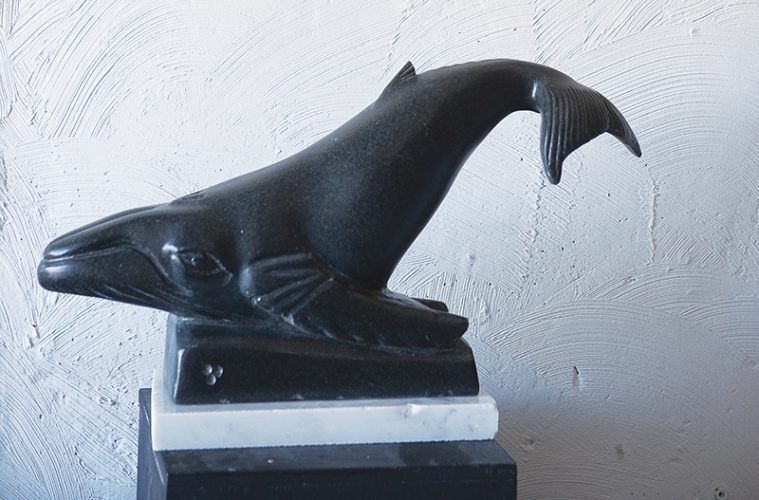
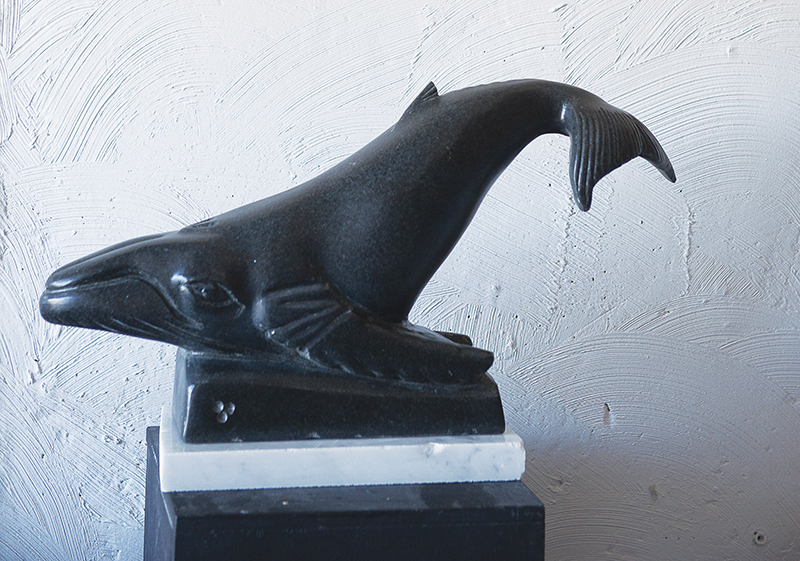 Photo by Sarah Phillips
Photo by Sarah Phillips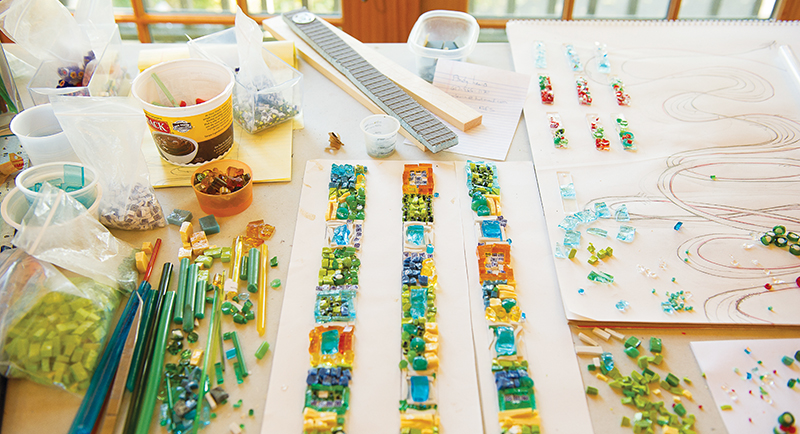 Photo by Sarah Phillips
Photo by Sarah Phillips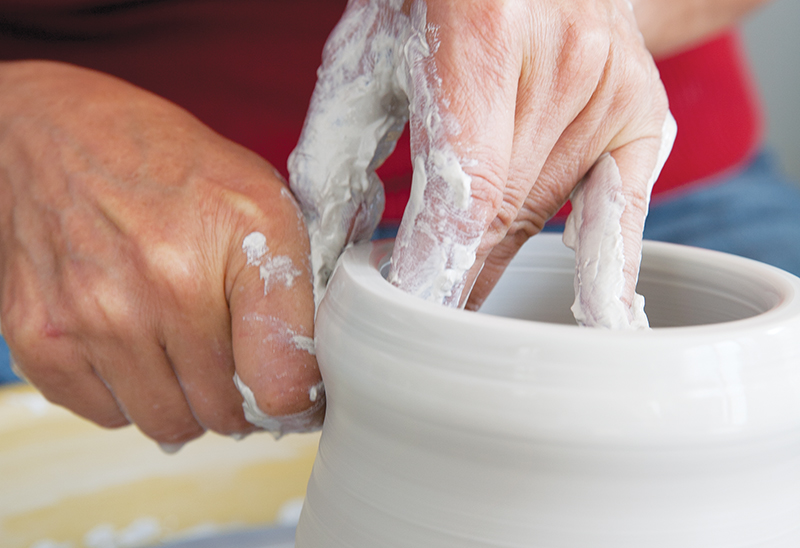 Photo by Paul Lyden
Photo by Paul Lyden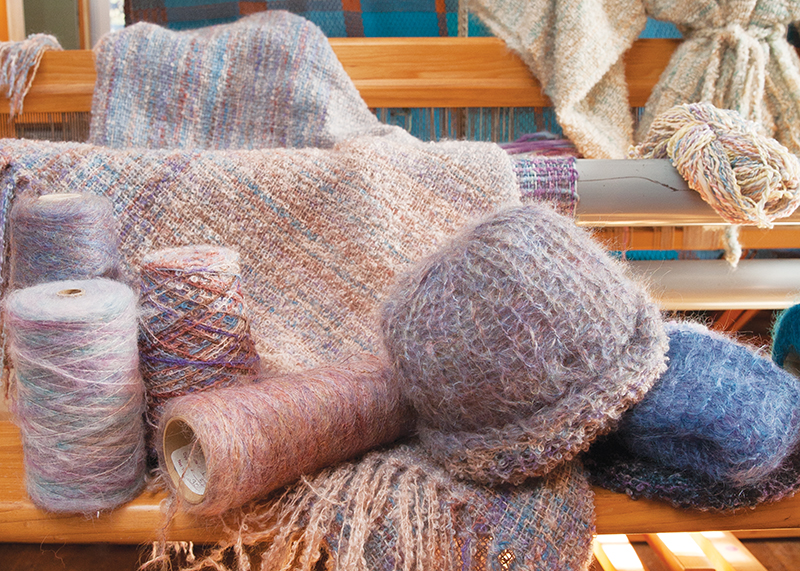 Sara Wright weaves on a ver large loom to create pieces for her company, Fiber Wrights / Photo by Paul Lyden
Sara Wright weaves on a ver large loom to create pieces for her company, Fiber Wrights / Photo by Paul Lyden